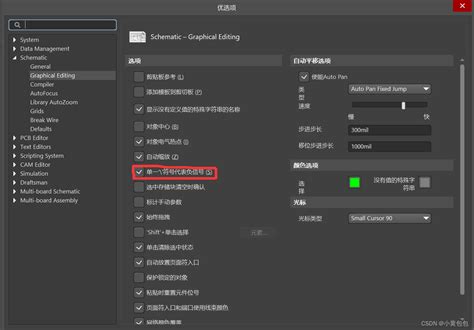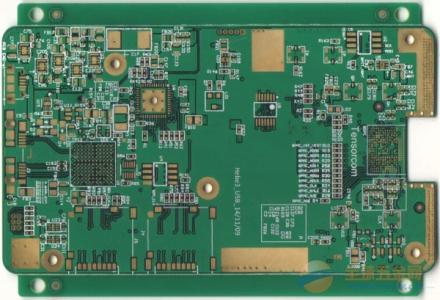Expedited PCB Manufacturing: Fast-Turn Strategies for Prototypes

Key Takeaways
When navigating PCB manufacturing timelines, understanding critical leverage points can transform your prototyping workflow. Leading PCB manufacturing companies achieve 24-hour turnarounds by implementing parallel processing and automated optical inspection (AOI) systems. Consider these factors when evaluating rapid services:
| Service Factor | Standard Turnaround | Expedited Service |
|---|---|---|
| 4-Layer Board Complexity | 5-7 days | 48-72 hours |
| Design Rule Verification | 12 hours | 2-4 hours |
| Final Quality Assurance | 8 hours | 3-5 hours |
"Accelerated timelines require design-for-manufacturability optimization. Submit Gerber files with clear layer stackups to prevent 63% of common delay triggers." – Industry Quality Report 2023
To balance PCB manufacturing cost and speed, prioritize vendors offering partial panelization – this technique reduces material waste by 28% while maintaining fabrication velocity. For PCB manufacturing business prototypes, verify ISO 9001-certified shops using direct laser imaging (DLI) technology, which cuts exposure times by 40% compared to traditional methods.
Pro Tip: Request real-time production dashboards from your supplier. Top-tier providers now offer encrypted portal access showing:
- Current fabrication stage
- Microscopic solder mask imaging
- Live impedance testing data
Remember: Every hour saved in prototyping multiplies your market validation opportunities. Analyze manufacturers’ change order policies – flexible engineering teams can implement mid-process revisions without full restart penalties.
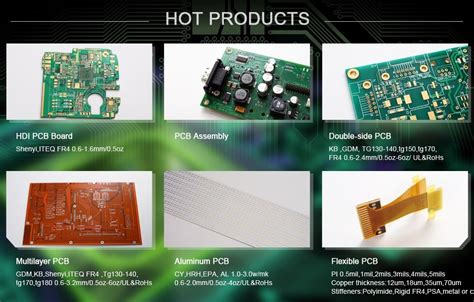
PCB Fast-Turn Prototyping Strategies
When implementing PCB manufacturing strategies for rapid prototyping, balancing speed with technical precision is critical. Start by simplifying designs where possible—reducing layer counts or minimizing complex via structures can shave hours off production. However, design for manufacturability (DFM) checks remain non-negotiable; even minor oversights in pad sizing or trace spacing can trigger delays. Leading PCB manufacturing companies often provide automated DFM analysis tools to preempt these issues, enabling faster revisions.
Another accelerator lies in material selection. Opting for FR-4 substrates with standard thickness (1.6mm) avoids specialty material lead times. For PCB manufacturing cost efficiency, consolidate orders by grouping prototypes with similar specs—many suppliers offer bulk discounts without compromising 24–48hr turnaround promises.
Collaboration timing also impacts velocity. Submitting files early in the manufacturer’s production cycle (typically Sunday evenings) helps secure priority slots. Some PCB manufacturing business models even reserve express lines for prototypes, bypassing standard queues. Always verify component availability upfront—pre-approved part libraries prevent last-minute redesigns.
While 4-layer boards add complexity, advanced manufacturers now streamline sequential lamination processes to maintain 72-hour deliveries. Just ensure your stackup aligns with the fab house’s high-speed drilling capabilities to avoid bottlenecks. By aligning these tactics, you transform rushed timelines into predictable workflows without sacrificing functionality.
Accelerating PCB Prototype Timelines
When optimizing PCB manufacturing timelines for prototypes, your design choices directly impact turnaround speed. Start by streamlining design files with clear layer stackups and standardized drill sizes—these reduce back-and-forth revisions with PCB manufacturing companies. Many providers now offer automated design rule checks (DRCs) to flag potential delays before production begins. For urgent projects, prioritize vendors with dedicated fast-track lines capable of handling 4-layer boards in 24-48 hours without compromising trace integrity.
Balancing PCB manufacturing cost and speed requires strategic material selection. While high-Tg FR4 might suit complex designs, standard substrates often enable faster processing. Some manufacturers employ parallel workflows—fabricating inner layers while preparing outer copper cladding—to shave hours off traditional sequential processes. Panelization techniques that maximize board density can further accelerate batch processing.
To maintain reliability in rapid PCB manufacturing business operations, verify certifications like ISO 9001 and IPC-A-600 compliance. Advanced shops combine automated optical inspection (AOI) with real-time quality analytics, ensuring even 24-hour turnarounds meet functional requirements. Always confirm DFM (Design for Manufacturing) compatibility—mismatched pad sizes or unrealistic impedance tolerances remain common delay triggers.
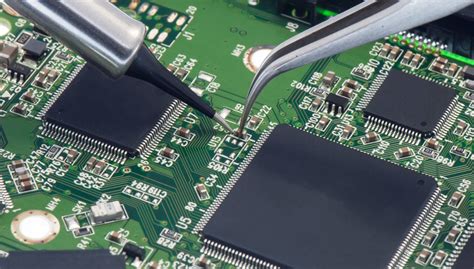
24-Hour PCB Turnaround Services Compared
When time-sensitive projects demand rapid prototyping, PCB manufacturing companies offering 24-hour turnaround services become critical partners. These providers specialize in compressing production timelines without sacrificing precision, but not all services are created equal. You’ll want to evaluate their capabilities for handling complex designs—such as high-density interconnects or impedance-controlled traces—while maintaining tight deadlines. For instance, some manufacturers prioritize simpler 2-layer boards for ultra-fast delivery, while others leverage advanced machinery to produce 4-layer PCBs within the same 24-hour window.
Balancing PCB manufacturing cost and speed requires understanding pricing structures. Expedited services often include premiums for material sourcing, automated optical inspection (https://www.andwinpcba.com) help compare these variables side-by-side, allowing you to identify providers that align with both budgetary and technical needs.
Key differentiators include certification compliance (e.g., ISO 9001), in-house assembly capabilities, and transparency in communication. Manufacturers that proactively update clients on production milestones—such as etching completion or solder mask application—minimize last-minute surprises. When selecting a 24-hour service, prioritize vendors with proven expertise in your project’s complexity level, ensuring that speed doesn’t come at the expense of reliability.
Maintaining Quality in Fast PCB Production
Achieving speed in PCB manufacturing doesn’t have to mean compromising on quality, but it requires deliberate strategies. Leading PCB manufacturing companies implement robust quality control measures even during accelerated production cycles. For instance, automated optical inspection (AOI) systems and real-time electrical testing are often integrated into high-speed workflows to catch defects early. This ensures that PCB manufacturing cost efficiencies from faster turnarounds don’t translate into costly rework or field failures.
When selecting a partner for expedited services, verify their adherence to industry certifications like ISO 9001 or IPC Class 2/3 standards. Reputable providers balance speed with design-for-manufacturability (DFM) checks to flag potential issues before fabrication begins. For complex projects like 4-layer PCBs, advanced equipment such as laser drills and precision plating lines becomes critical to maintain tolerances under tight deadlines.
Transparency is key: ask how the PCB manufacturing business manages material sourcing and process controls during rapid builds. Some firms use pre-vetted material inventories or parallel processing stages to reduce bottlenecks. By aligning your design requirements with their capabilities upfront, you mitigate risks without sacrificing velocity—proving that speed and precision can coexist.
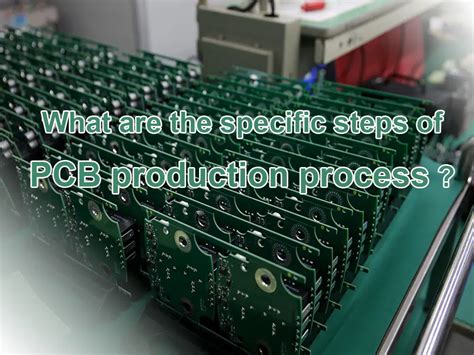
Cost-Effective Fast PCB Prototyping
When balancing speed and affordability in PCB manufacturing, design optimization becomes your most powerful tool. Streamlining your board layout by minimizing layer counts, avoiding unnecessary via structures, and standardizing component footprints can significantly reduce PCB manufacturing cost without compromising functionality. Leading PCB manufacturing companies now offer tiered pricing models that reward proactive design-for-manufacturability (DFM) adjustments, enabling 24–48-hour turnarounds at rates comparable to standard lead times.
Material selection plays a pivotal role in cost containment. While high-frequency laminates might tempt engineers, many fast-turn services maintain inventories of FR-4 substrates that meet 90% of prototype requirements. Partnering with manufacturers that leverage panel-sharing programs further distributes expenses across multiple clients—a strategy particularly effective for small-batch orders.
For businesses scaling their PCB manufacturing business, bulk prototyping discounts often apply when ordering 5–10 identical boards. However, true cost efficiency emerges when aligning your design revisions with the manufacturer’s preferred design rules, reducing their reprocessing time. Always request detailed breakdowns that separate tooling, material, and labor charges—this transparency helps identify where value engineering can trim expenses without sacrificing the accelerated timelines critical to iterative development.
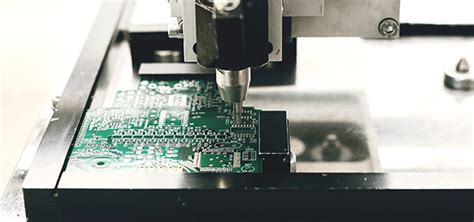
4-Layer PCBs: Speed vs Complexity
When balancing PCB manufacturing timelines for 4-layer designs, you’re navigating a critical trade-off: faster production versus intricate layer management. Unlike simpler 2-layer boards, 4-layer PCBs require precise alignment of inner signal and power planes, which adds complexity to fabrication. While many PCB manufacturing companies advertise rapid turnarounds, accelerating multi-layer builds demands advanced equipment and expertise to avoid impedance mismatches or delamination risks.
To maintain speed, manufacturers often optimize processes like laser drilling and automated optical inspection (AOI). However, these upgrades can influence PCB manufacturing cost, especially for prototypes requiring tight tolerances. For instance, some suppliers prioritize quicker lamination cycles but may compromise on thorough signal integrity testing. This is where vetting PCB manufacturing business partners becomes essential—ask about their capacity to handle high-speed materials or HDI (high-density interconnect) workflows without extending lead times.
Ultimately, the challenge lies in aligning your project’s technical demands with realistic timelines. While 24–72-hour services exist, not all manufacturers can deliver consistent quality for 4-layer designs. Always verify their capability to manage stack-up complexity within your deadline—because rushing fabrication without quality safeguards risks costly redesigns later.
Avoiding PCB Production Delays
To minimize delays in PCB manufacturing, start by clearly communicating your project’s technical requirements and deadlines with PCB manufacturing companies early in the process. Design errors are a common bottleneck, so use design for manufacturability (DFM) checks to ensure your files meet fabrication guidelines. Even minor oversights, like mismatched drill sizes or incomplete layer alignment, can add days to turnaround times.
Another critical step is verifying material availability. Specialty substrates or high-Tg laminates may require longer lead times, so confirm inventory levels with your supplier before finalizing orders. For cost-sensitive projects, balancing PCB manufacturing cost with speed often means opting for standardized materials unless your design demands specific properties.
Equally important is selecting partners with transparent workflows. Reputable PCB manufacturing business providers offer real-time tracking and proactive alerts for potential delays, such as copper shortages or equipment maintenance. Automated quality control systems, like AOI (automated optical inspection), also reduce rework risks without sacrificing speed.
Finally, build contingency time into your schedule. While 24-hour services excel for simple designs, complex 4-layer boards may need buffer periods for multilayer alignment or impedance testing. By aligning expectations and leveraging proven strategies, you can streamline production without compromising reliability.
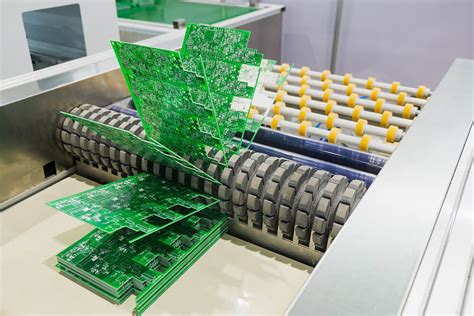
Future Trends in Fast PCB Assembly
As PCB manufacturing evolves, emerging technologies are reshaping how speed and precision converge in prototyping. Leading PCB manufacturing companies are integrating AI-driven design validation tools that slash iteration cycles by 40-60%, enabling real-time error detection before production begins. Advanced automation—such as robotic pick-and-place systems with machine vision—is minimizing human intervention, ensuring consistent quality even in 24-hour turnaround services.
Another breakthrough lies in additive manufacturing techniques, like laser-direct structuring, which bypass traditional etching steps to accelerate multi-layer builds. These innovations directly address PCB manufacturing cost pressures by reducing material waste and rework rates. Meanwhile, sustainable practices—such as halogen-free substrates and modular board architectures—are gaining traction, allowing faster disassembly for reuse or recycling without compromising durability.
For businesses navigating the PCB manufacturing business landscape, cloud-based collaboration platforms are becoming critical. They enable seamless communication between design teams and fabrication units, compressing approval timelines. Expect to see more manufacturers offering hybrid models that pair ultra-fast prototyping with low-volume production scalability, ensuring you stay agile in competitive markets. Real-time tracking systems, powered by IoT sensors, will further enhance transparency, letting you monitor assembly milestones down to the minute.
Conclusion
When navigating PCB manufacturing timelines, balancing speed with reliability remains critical. While 24-hour turnaround services offer remarkable agility, success hinges on selecting PCB manufacturing companies that align rapid production with robust quality controls—especially for complex 4-layer designs. Understanding PCB manufacturing cost drivers, from material selection to layer count, empowers you to make informed trade-offs without compromising functionality.
As the PCB manufacturing business evolves, advancements in automated workflows and predictive analytics are shrinking production windows further. However, maintaining open communication with your supplier ensures design specifications aren’t sacrificed for speed. By prioritizing manufacturers with transparent processes and certifications, you mitigate risks of rework or delays, even under tight deadlines.
Ultimately, fast-track prototyping isn’t just about urgency—it’s about strategic partnerships that deliver precision at pace. Whether testing a new concept or scaling production, aligning your priorities with a manufacturer’s capabilities ensures your project stays on track, both financially and technically.
FAQs
How do pcb manufacturing companies ensure quality during rapid prototyping?
Reputable providers use automated optical inspection (AOI) and strict process controls to maintain pcb manufacturing standards, even for 24-hour turnarounds. Many combine this with real-time progress tracking to catch errors early.
What factors influence pcb manufacturing cost for fast-turn projects?
Expedited fees, material selection, and layer count (e.g., 4-layer PCBs) primarily drive costs. Bulk prototyping discounts and standardized design files can reduce expenses without compromising speed.
Can complex designs like 4-layer PCBs be produced quickly?
Yes, but clarity in design files is critical. Leading pcb manufacturing businesses prioritize stack-up details and impedance requirements upfront to avoid revisions.
How do you avoid delays in fast-turn pcb manufacturing?
Submit error-free Gerber files, confirm material availability, and clarify special requirements (like controlled impedance) before ordering. Partnering with manufacturers offering design-for-manufacturability (DFM) checks minimizes setbacks.
Will faster timelines affect long-term product reliability?
Not if working with certified pcb manufacturing companies. Accelerated production focuses on optimizing workflows, not skipping quality tests—properly executed fast-turn PCBs meet the same IPC standards as standard orders.
Ready to Streamline Your Next PCB Prototype?
For tailored solutions balancing speed and precision in pcb manufacturing, please click here to explore services optimized for urgent project needs.


